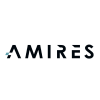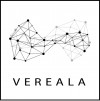The OECD has published the Round Table information from the WPMN meeting held in June 2023 (period June 2022-June 2023), entitled “Developments in Delegations on the Safety of Manufactured Nanomaterials and Advanced Materials – Tour de Table”.
Highlights from this publication regarding information from Member Countries on National developments on human health and environmental safety on Nanomaterials/ Advanced Materials, are summarised in this document. Further information on reported activities can be found in the online document which cover:
- OECD Recommendation of the Council on the Safety Testing and Assessment of Manufactured Nanomaterials
- Developments related to good practice documents
- Information related to Integrated Approaches to Testing and Assessment (IATA) for NM/ AdMa
- Developments and/ or considerations related to Advanced Materials (multicomponent / complex)
- Developments in policy context for Advanced Materials
- Research programmes or strategies designed to address human health and/ or environmental safety aspects of (advanced) (nano) materials
- Developments and/ or research related to Safe(r) and Sustainable Innovation Approaches, Safe-by-Design and/or other anticipatory strategies relevant for (advanced) (nano) materials.
The NIA actively contributes to this document through BIAC.
Relevant activities are highlighted below. For more information, please refer to the online document.
Australia
The Australian Industrial Chemicals Introduction Scheme (AICIS) in the past 12 months issued a certificate to authorise the manufacture of two physical forms of graphene (CAS number 1034343-98-0) in Australia. This certificate included a defined scope of assessment (DSA) which describes introduction volume, uses and concentrations of the chemical in end use products. For chemicals at the nanoscale, the DSA also states particle size and size distribution, surface area, surface functionalisation, layer number, purity, etc.
Austria
The NanoTrust joined workshop with the OECD BNCT (Biotechnology, Nanotechnology and Converging Technologies) has resulted in an OECD policy paper under the title “Technology assessment for emerging technology: Meeting new demands for strategic intelligence” (POLICY PAPERS, April 2023, No. 146). The policy paper is available here.
NanoTrust and the Austrian Nanogovernance System was presented as case study of national best practices regarding the deployment of technology assessment and foresight studies to appropriately manage uncertainties of emerging technologies.
Belgium
Presented the annual reports from 2016-2021 on the placing on the Belgium market of substances produced in nanoparticular state (report from 2022 on-going). In total, 2210 registrations were submitted by 210 registrants. These registrations involve about 213 different chemical substances (based on CAS-number). In total, nearly 90 000 tons of substances, produced in nanoparticular state, were introduced on the Belgian market, either by import or by production. The substances imported and/or produced in a quantity above 1 000 ton are carbon black, calcium carbonate, silicon dioxide; synthetic amorphous silicon dioxide (nano) and Pigment Blue 15. These numbers result only from the registrations submitted for nanomaterials and placed on the market as substances. More information about the registry and access to the published reports can be found on the website www.nanoregistration.be
Canada
Canada has assessed 16 nanomaterials and potential nanomaterials since WPMN22. In addition, three pre-notification consultations were completed. On June 20, 2022, Health Canada published a State of the Science report and summary that considered the available scientific studies for TiO2 as a food additive in a variety of foods, including new scientific information available since the EFSA opinion. Although Health Canada’s evaluation focused on food-grade TiO2, it was acknowledged that toxicity studies conducted with food-grade TiO2 simultaneously evaluate nanoparticles (TiO2-NPs) that may be present. Studies using engineered TiO2-NPs were also considered if they provided key support for conclusions reached by EFSA or other expert committees. Health Canada found no conclusive scientific evidence that food-grade titanium dioxide, used as a food additive, is a concern for human health.
Germany
Based on a proposal by Germany, the European Commission included Multi-Walled Carbon Tubes MWCT (diameter ≥30 nm < 3 µm, length >= 5 µm) into CLP regulation (EC No. 1272/2008) Annex VI as Carc. 1B (H35li) and STOT RE1
BAuA (German Federal Institute for Occupational Safety and Health) together with BfR (German Federal Institute for Risk Assessment) has launched a Risk Management Option Analysis (RMOA) under REACH for the protection against critical fibre dust. As is known from the asbestos history, bio-persistent fibres of critical dimensions (WHO fibre criteria) can cause lung cancer upon inhalation. This risk is currently not sufficiently covered in European chemicals regulation. A public consultation on further risk information was successfully completed. The consultation results were evaluated and based on the results the different risk management options under REACH are discussed. A restriction of fibre material is preferred over authorisation as it is considered more efficient to regulate the placing on the market. The proposed assessment strategy for the “fibre pathogenicity paradigm” would be possible with a restriction.
Italy
A particular focus has been directed to the assessment of the hazards linked to nanoforms as well as the assessment of the harmonized classification of metals in nanoforms, such as silver, which was discussed during 2022 at two meetings of the Risk Assessment Committee (RAC). The European Commission Directive 2019/1832/UE of 24 October 2019 amended the annexes I, II, and III of the Council Directive 89/656/EEC, introducing the use of personal protective equipment (PPE) to ENV/CBC/MONO(2024)1 | 13 Unclassified protect workers in the activities in which nanomaterials exposure risk has been recognized. On December 20, 2021, the National Decree adopted the Directive 2019/1832/UE by updating the Annex VIII of the Legislative Decree no. 81/2008 that regulates occupational safety and health at national level. As a result, the employers should evaluate if their activities include the manufacturing/use of nanomaterials (as defined by EC Recommendation 2011/696/UE, recently updated by the EC Recommendation 2022/C 229/01) and provide PPE (such as face masks, gloves and/or suits) to the exposed workers who will be properly informed and trainee for the correct use and maintenance.
Switzerland
An update of the Precautionary Matrix for Synthetic Nanomaterials is currently available.
United States
The U.S. Environmental Protection Agency (EPA) completed review of four low volume exemptions (LVE) which included a graphene material, a titanium dioxide material, and two graphene oxide materials, one of which was a modification to an existing exemption. Two of the LVEs were denied, and two were granted under conditions that limited human and environmental exposures to prevent unreasonable risks. Additionally, the EPA has under review 17 premanufacture notices, 16 of which are for multi-walled carbon nanotube chemical substances and one of which is for a graphene material. These 17 chemical substances are still being reviewed for potential risks to human health and the environment. One significant new use notice for a single-walled carbon nanotube was reviewed and completed. It was regulated with a consent order due to limited available data on nanomaterials. This consent order will limit uses and human and environmental exposures to prevent unreasonable risks.
Between June 2022 and June 2023, EPA received notification of 2 nanoscale substances based on metal oxides that met reporting criteria pursuant to its authority under the U.S. Toxic Substances Control Act ENV/CBC/MONO(2024)1 | 15 Unclassified (TSCA) section 8(a), bringing the total number of notifications to 87. Reporting criteria exempted nanoscale chemical substances already reported as new chemicals under TSCA and those nanoscale chemical substances that did not have unique or novel properties. Most reporting has been for metals or metal oxides. Since January 2005, EPA has received and reviewed more than 275 new chemical notices for nanoscale materials under TSCA including fullerenes and carbon nano-onions, quantum dots, semiconducting nanoparticles, and carbon nanotubes. EPA has issued consent orders and Significant New Use Rules (SNURs) regulating new chemical submissions of these nanoscale materials permitting manufacture under limited conditions. A manufacturer or processor wishing to engage in a designated significant new use identified in a SNUR must submit a Significant New Use Notice (SNUN) to EPA at least 90 days before engaging in the new use. A sanitized version (i.e., without confidential business information) of such a consent order is available. Because of confidential business information claims by submitters, EPA may not be allowed to reveal to the public the chemical substance as a nanoscale material in every new chemical SNUR it issues for nanoscale materials. EPA will continue to issue SNURs and consent orders for new chemical nanoscale materials in the coming year. Because of limited data to assess nanomaterials, the consent orders and SNURS contain requirements to limit exposure to workers through the use of personal protective equipment, limit environmental exposure by not allowing releases to surface waters or direct releases to air, and limit the specific applications/uses to those described in the new chemical notification.
European Union
In the EU, nanomaterials are assessed alongside other chemicals. The Scientific committee on Consumer Safety (SCCS) has in 2023 and at time of writing (June 2023) prepared a preliminary opinion on Fullerenes, Hydroxylated Fullerenes and hydrated forms of Hydroxylated Fullerenes (nano) and finalized an opinion on Hydroxyapatite (nano).
Since June 22, the Risk Assessment Committee of the European Chemicals Agency (ECHA) finalized opinions on proposals for harmonized classifications for multiwall carbon nanotubes and nanosilver.
The European Commission has in June 2022 published a revised Recommendation on the definition of nanomaterial (2022/C 229/01), replacing recommendation issued in 2011. The work is now ongoing in applying the recommendation by modification of definition in the legislation within different sectors (e.g. REACH).
The Joint Research Centre of the European Commission (JRC) released in 2023 the new Guidance 16 | ENV/CBC/MONO(2024)1 Unclassified on the implementation of the Commission Recommendation 2022/C 229/01 on the definition of nanomaterial (print version: 10.2760/237496) supporting its implementation.



















